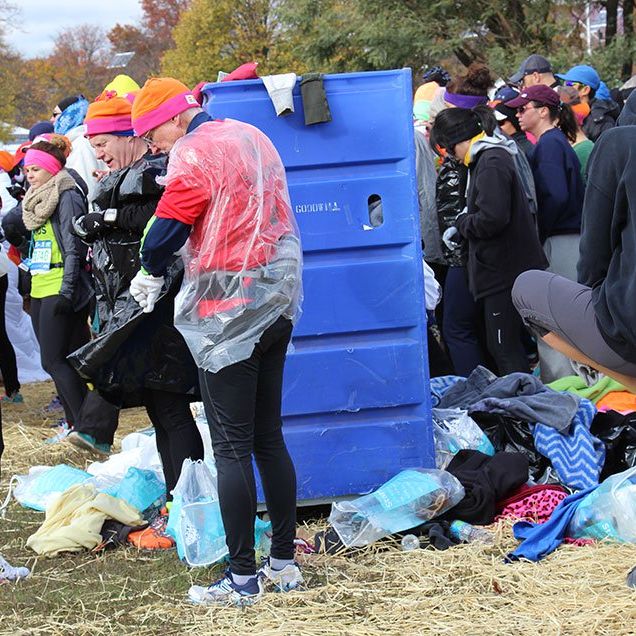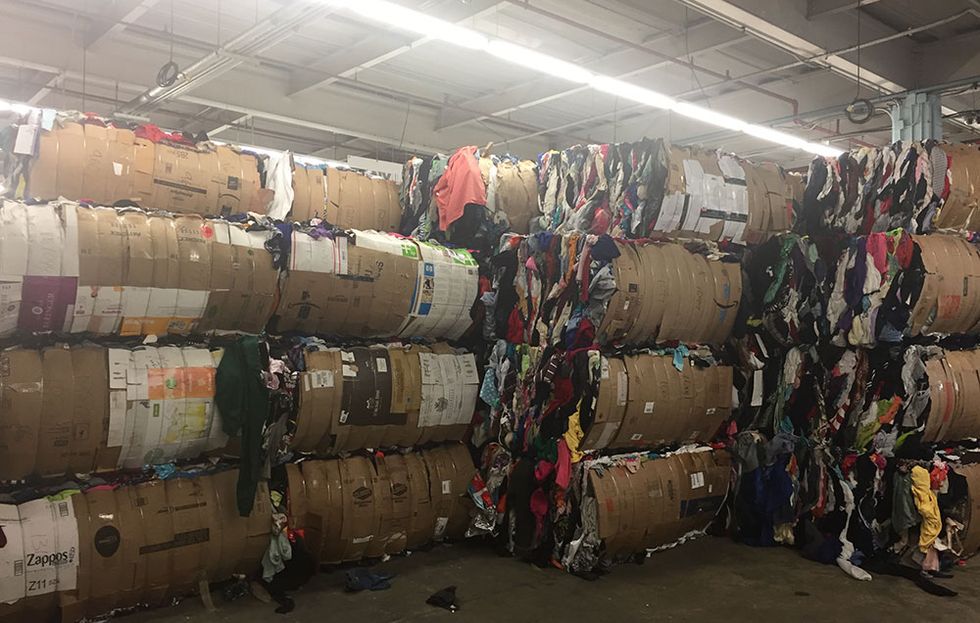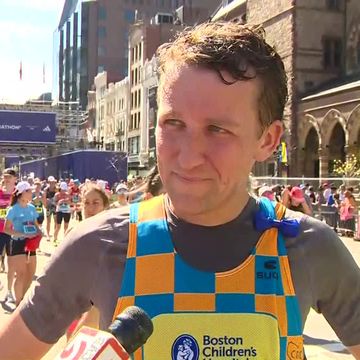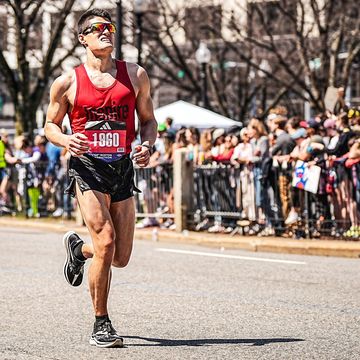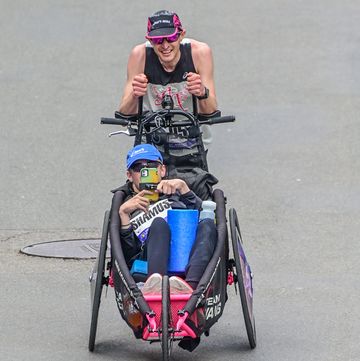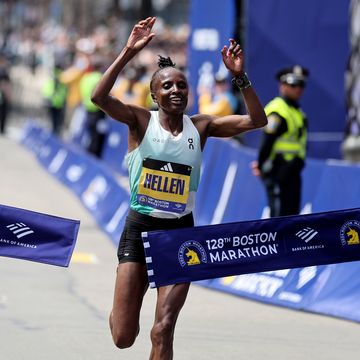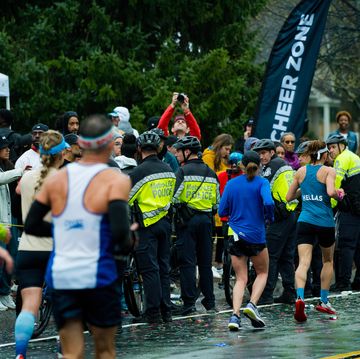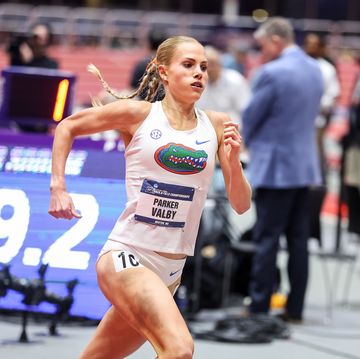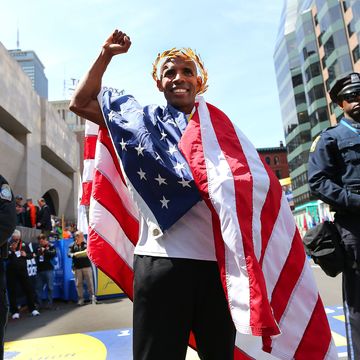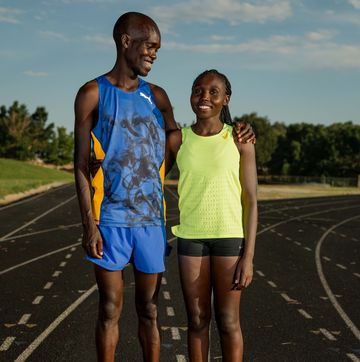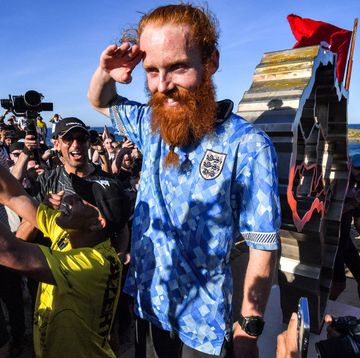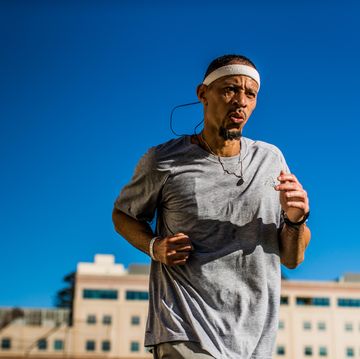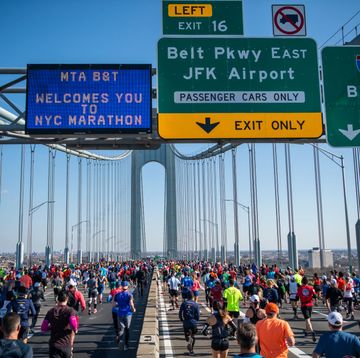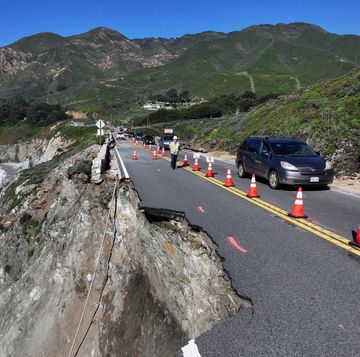Two weeks ago, Jack Mulvaney found himself in front of a rack of plain gray sweatpants for $6 each at a Target store. He had come there to buy ink for his printer, but remembered he had a special event coming up where the sweats would be ideal. He plucked a pair off the rack and brought them home to his apartment in Crown Heights, Brooklyn.
Little did they know it, but when they rolled off the garment factory floor and were packed into a box to be delivered for sale, that humble pair of sweatpants was destined for greatness. They were going with Mulvaney to the start of the 2017 New York City Marathon, his first-ever 26.2-miler through the five boroughs, where they would serve an important but short-lived purpose. They were intended to keep him insulated from the cold in the anxiety-filled hours of waiting in the open-air corrals before he embarked on his journey—only to be discarded along with the approximately 43 tons of jackets, sweatshirts, running apparel, blankets, sleeping bags, bathrobes and the occasional fur coat abandoned at the start villages by the race’s 50,000-plus other runners.
RELATED: The Best Throwaway Gear for Any Marathon
It’s a massive amount of stuff, and since 2012, race organizer New York Road Runners has partnered with Goodwill Industries of New York and New Jersey to collect these cast-offs, which are then distributed and treated as donations to the nonprofit agency’s stores. According to Goodwill, this year’s haul totaled 86,364 pounds, a bit more than half the 166,000 pounds of clothing it collected in 2016 and their lowest haul since the nonprofit started working with the marathon. The tonnage depends greatly on the weather says Jim Heim, New York Road Runners’ senior vice president of event development and production, who oversees all of the operations that go into the marathon as the race’s technical director.
Right on the water in the start villages at Fort Wadsworth in Staten Island, the air can be a good five to 10 degrees cooler and runners figure it is better to be overprepared than underprepared, Heim says. “You’re out in the open there and you’ve got to wait for a while so runners come bundled up because they don’t know precisely what it’s going to be like,” he says. “They’ll try to bring (prohibited items like) tents and duvets and it looks like they’re moving in.”
This year’s race was relatively warm, as in 2015, when Goodwill collected just 125,000 pounds on an unseasonably temperate race day. But in 2014, on a Marathon Sunday marked by freezing cold winds, they amassed a whopping 207,000 pounds of clothing.
Recycling all that waste is a huge undertaking that began in 2007 when Heim approached then-NYRR president Mary Wittenberg about diverting some of it from landfills. That’s where the bulk of it used to go (save for some choice items that local, in-the-know Staten Islanders would pick over after the start villages emptied out) until NYRR contracted with Queens-based carting company Royal Waste Services in 2008 to be its waste-removal provider. The company hauls away items like paper, plastic, and cardboard left over at the start for recycling, which they still do today. They also recycle the 1.6 million paper cups used along the course to serve runners water and the 700,000 cups used for Gatorade.
“It was just the right thing to do,” Heim says.
Then, in 2009, NYRR expanded its sustainability efforts by partnering with textile recycler Wearable Collections to scoop up clothes at the start. “Wearable Collections could take some of it, but couldn’t take it all,” Heim said. “They were great and a lot of it was turned into rags for industrial use around the globe, but we wanted to stay local and Goodwill has big-box trucks to haul it away.” That fleet of vehicles, along with bins and dumpsters provided by the New York City Department of Sanitation, increased the collection capacity from 22 tons in 2011 to a bit over 25 tons in 2013 (the race was cancelled in 2012 due to Hurricane Sandy).
“When you’re dealing with the volume that we are, it just wouldn’t feel right for it all to go in the ground,” Heim says.
The statistics are staggering. Even with such huge volume, the NYC Marathon is just a fraction of the 128 million pounds of usable clothing and household goods that Goodwill NYNJ helps divert from landfills each year. And in our throwaway society, that pales in comparison to the 25 billion pounds of used textile waste that is generated each year in the United States, only 15 percent of which gets donated or recycled while the remaining 21 billion pounds goes to landfills, an amount that has doubled over the last 20 years, according to the Council for Textile Recycling.
The Art of Race-Day Layering
Mulvaney, a 27-year-old special education teacher, paired his race-day sweatpants with one of five identical sweatshirts he owns: A gray cotton crewneck sporting the emblem of a pig with wings and the logo of Mulvaney’s Building & Loan, his uncle’s farm-to-fork restaurant in Sacramento, California. The old-school, 1970s-inspired matching gray sweatsuit was topped off with the ultimate layer, a Steve Prefontaine–esque mustache that Mulvaney had grown in solidarity with some of his teammates from North Brooklyn Runners, a local New York City running club. (Full disclosure: I’m also a member of NBR.)
His mustache certainly wasn’t going anywhere, but at 9:40 a.m., with 10 minutes to go before the Wave 1 start for local competitive runners, Mulvaney kicked off his sweatpants. With five minutes to go before the horn, he balled up his matching sweatshirt and chucked it over the edge of the corral.
RELATED: These Unexpected Stores Sell Really Awesome Running Gear
“I guess this is happening now,” Mulvaney thought as he parted with his last warm layer, and prepared to head off in his shorts and racing singlet on a journey that would take him to the finish line in an impressive 2:43.02.
A week before the race, in his East Village apartment, New York City native and NYC Marathon veteran Jose LaSalle, 49, rummaged through a bin of old clothes and unearthed a florescent yellow cotton long-sleeved shirt from the 2016 Ted Corbitt 15K, a local road race. He had saved it while spring cleaning this year for the express purpose of discarding it at the marathon. Come race day, that yellow shirt, plus an ancient pair of Nike Dri-Fit track pants, dating to the advent of late 1990s-era sweat-wicking performance technology and cracking from age, accompanied LaSalle to the start of his sixth hometown marathon, and 12th marathon overall. He also brought along a hat, gloves and two heat sheets saved from previous road races.
Related video: How to keep your jacket secure if the weather warms up on your run.
LaSalle, an operations manager for the MTA who has also volunteered for many years at the marathon’s Mile 12 fluid station, threw his track pants into one of the 345 blue Goodwill bins dotting the start village before lining up in Corral C of Wave 1. His peeled off his Day-Glo yellow shirt somewhere on the Verrazano Bridge, where in 2014—that particularly windy marathon Sunday—collection organizers said colorful scraps of discarded clothing could be seen fluttering through the air into the harbor below.
LaSalle said he has learned to hang on to old, unsentimental items after participating in so many NYC Marathons. “I’ve seen good quality, really expensive stuff being thrown away at the start of a race—brand new, $80, $90 jackets—and always wondered, ‘What’s going to happen to that?’”
Where It All Goes
The answer is that those high-end items, along with LaSalle’s old track pants and Mulvaney’s $6 sweats, are all collected by Goodwill in a huge operation that takes at least 200 volunteers all day and 23 trucks to haul away.
The clothing is sorted at Goodwill’s distribution center in Astoria, Queens, before items considered suitable for sale are tagged by the production team and then distributed to their 41 New York metro area stores. And though Goodwill store managers have an eye for high value items, when those brand-new $80 and $90 jackets are scooped up in the mix, they are simply priced by brand name and condition. The nonprofit doesn’t necessarily have personnel who specialize in identifying rare, high-value items, says Goodwill spokesman Jose Medellin, but that’s the thrill of the thrift store hunt.
“We don’t have anyone who has the knowledge to distinguish between just a framed picture or a piece of art, and for clothing there’s no way to say this is vintage Nike or Adidas,” Medellin says. “That’s the beauty of Goodwill. People go the stores and say, ‘Oh, my goodness, look what I found!’ That’s part of the treasure.”
All of the proceeds go toward supporting Goodwill’s mission to help individuals with disabilities gain employment. What’s not sold after a few weeks of being marked down at discount goes to Goodwill’s outlet in Long Island City, where it is sold by the pound.
Of course, not all the clothes discarded at the start make it to a Goodwill store. According to Heim, about one third are deemed unsuitable for resale. Those soiled or damaged garments are then sold in bulk by Goodwill for pennies on the dollar to textile recyclers who shred them or grind them up into fibers to be repurposed into new products like yarn, paper, insulation and carpet padding. Anything that still goes unsold after a few weeks at the Long Island City clearance center also gets baled up and sold to textile recyclers.
On-the-Spot Recycling
And some clothes are recycled right at the start villages, picked up from the bins by chilly runners who find themselves unprepared for the long wait in the corrals before the starting gun goes off.
Nicoletta Lakatos, 30, a lawyer and self-described “aspiring minimalist” who actively rids her small New York City apartment of nonessentials, didn’t have spare throwaway layers to bring with her.
“I don’t have anything extra,” she said, “Everything I have I really like.”
So the first-time NYC marathoner decided to wear some beloved items that she would check to pick up again at the finish—her favorite red hoodie from her college swimming days at McGill University and a pair of dark blue sweatpants. But after parting with them, Lakatos found herself shivering with more than an hour to go before her start. So she took a page from NYRR and Goodwill’s repurposing initiative and dug inside one of the donation bins for clothing her fellow runners had already discarded.
“I was embarrassed and hoped no one was watching me but it was pure survival,” Lakatos recalled. “I was thinking, ‘What do I need right now?’”
She grabbed a ratty men’s gray hoodie and one of those orange-and-pink knit hats from race partner Dunkin Donuts that are ubiquitous at the start. The sweatshirt came off at Mile 8, the hat at Mile 16—in the middle of the Queensboro Bridge.
Lakatos, who vowed to buy throwaway-able layers from a thrift store the next time she embarks on a marathon, ruminated on whether any of the layers runners often buy secondhand at local Goodwill stores could have been worn by a runner in previous years, in a never-ending cycle of race-day donations. She smiled to herself at the prospect of unknowingly wearing a piece of clothing that had been to more NYC marathon starts than she had.
“You never know!” she said.
Unless, of course, you find a gray Mulvaney’s Building & Loan sweatshirt in a New York City metro area Goodwill in the next couple weeks—then you’ll know exactly how it wound up in your hands.
